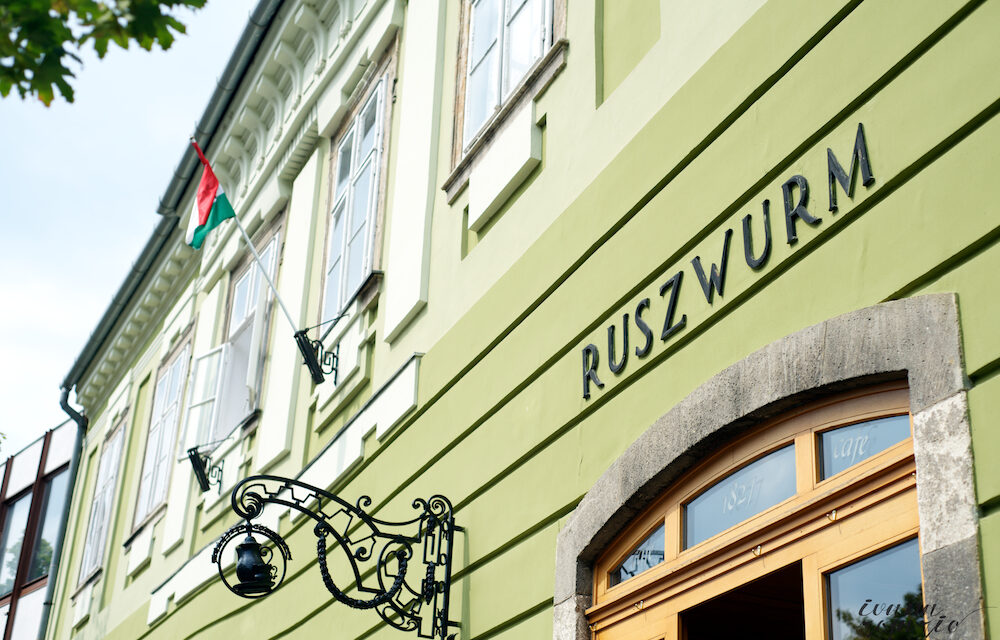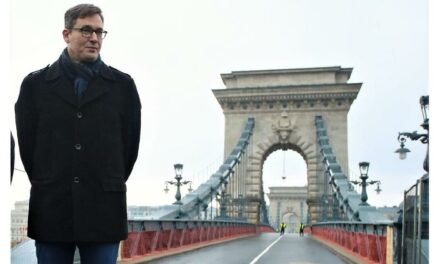Throughout history, neither the revolution of 1848 nor World War II destroyed the pastry shop. World War II could not start... then Márta V. Naszályi came.
Unpleasant events are taking place around the famous Ruszwurm Confectionery, even though throughout history neither the 1848 revolution nor World War II. World War II was unable to open a shop that once deserved a better fate, which has now become the scene of legal battles.
A scandal recently erupted in connection with the confectionery: press reports spoke of "attempted bribery" and "corruption",
according to which, on behalf of the local government, they requested tens of millions of "protection money" from Miklós Szamos - the current owner - so that he could keep his businesses,
including the Ruszwurm Confectionery. The offer involved two confectioneries: Koroná and Ruszwurm, read Miklós Szamos' statement.
On October 9, 2023, Márta V. Naszályi, the mayor of Budavári Municipality, denied the published press reports on her social media page. "Mr. Szamos' claims are ridiculous, but accusing someone of corruption cannot be done without consequences. I will file a complaint for defamation in the matter, and if the court orders Mr. Szamos to pay a fine - which I am sure of - I will donate the amount to charity," the district manager wrote.
The latest development in the scandal is that the case has escalated to the point where
that on December 4, the Budavári Municipality will permanently close Ruszwurm.
Budavári bribery scandal - the municipality of Márta V. Naszályi closes the famous pastry shops
The history of the pastry shop
Confectioner Ferenc Schwabl began operating in 7 Szentáromság utca in Buda Castle in 1827, and a patina patisserie that is not so luxurious as it has a family atmosphere has been operating without interruption in this place to this day. The founder died three years later, and he was succeeded by Lénárt Richter, who married the widow, and had previously been a court baker for Palatine József.
During Richter's time, a master carpenter from Krisztinaváros (supposedly named Krautsiedler) and sculptor Lőrinc Dunaiszky dreamed up and created to perfection the furniture that has survived to this day, which radiates the Biedermeier atmosphere.
the age in which the enjoyment of sweets was one of the most characteristic pleasures.
The famous equipment survived the War of Independence in 1848, and was used in World War II. siege during World War II, and since then it has been declared protected.
"Behind the mahogany inlaid counter made of cherry wood, the door bordered by wooden columns seems to lead to the fictional world of old Buda. There are glass cabinets on both sides, gilded table decorations glitter in them and trinkets from the confectionary fashion of a century and a half: an artistic figure in a hundred and a hundred shapes, a girl playing a guitar, a bakfis in a baby hat, sugar nips, a married couple in a box containing parlor sugar, a woman in a bridal veil, a respected gentleman in a tailcoat, bishops, their hats with a dress under them, a red flag in their hands, a prayer book under their arms, beautiful horses, you can take off their necks and there is sugar in their bellies, Easter eggs, little angels in cute boxes. Opposite the entrance are statues of women, above the door, sunbeams shoot around the face of the clock, and above it, an eagle defies time," reads the charming description on the confectionary's website .
Sissi's favorite
For a long time, the craft of confectionery was the art of men. But the Ruszwurm was groundbreaking in this respect as well, since only girls could study here. But the patisserie also has a different connection to women, because in a strange way the patisserie was always inherited by a female line: Schwabl's widow was taken by Richter, his niece by Müller, his daughter by Vilmos Ruszwurm, who trained there, was released there, and then as owner he gave the the name of the store, and he ran the confectionery from 1884 to 1922. Vilmos Ruszwurm was mentioned as one of the leading personalities of the Hungarian confectionary industry, and the popularity of his shop remained between the two wars.
During the 1960 renovation, a business book from the years 1883-1890 was found.
According to E, the majority of the clients were noblemen, some of whom often appeared twice a week.
In other words, at that time, noble households no longer met their needs through their home confectioners, as they did at the beginning of the century, but they also bought from small businesses. Another large group of dispensaries was made up of ministry officials, teachers, military officers, and engineers, we only find a small number of industrialists, a few farmers, and vineyard owners in Buda.
In addition to being one of Sissi's favorite pastry shops, Ruszwurm was also frequented by the Andrássy, Ferenc Deák, and the Eötvös, according to the store's business books. But Ilona Edelsheim-Gyulai, the wife of István Horthy (son of governor Miklós Horthy), who lives in the neighboring Dísz tér, entered this interior while sipping hot chocolate. daily breakfast for the Empress of Austria and the Queen of Hungary.
Sissi mostly consumed iced coffee, delicious-smelling, easy-to-breathe kuglóf and spearmint bars.
Today, the confectionary has no shortage of famous guests either, since many people, from Arnold Schwarzenegger to the President of Slovenia, have visited the famous building.
Featured image: mylittlethings.com












